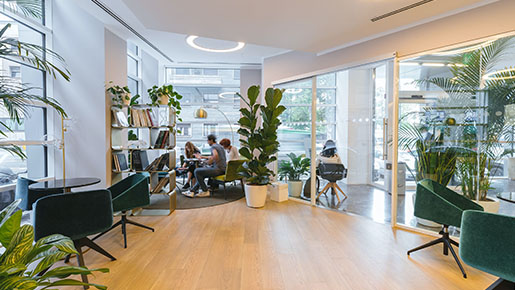Creating a comfortable office environment is essential for productivity, well-being, and overall job satisfaction. Whether you work from home or in a traditional office setting, optimizing your workspace for comfort can significantly enhance your work experience. This article will take you through several strategies to consider when making your office more comfortable.
Ergonomic Furniture
Investing in ergonomic furniture is paramount to creating a comfortable workspace. A supportive and adjustable chair with proper lumbar support promotes good posture and reduces the risk of back pain. Similarly, an ergonomic desk that can be adjusted to your preferred height ensures that your wrists and arms are in a comfortable position while typing.
In addition to an ergonomic chair, consider adding cushions or pillows to your seat for extra comfort. These additions can help alleviate pressure points and make prolonged sitting more pleasant.
Proper Lighting
Effective lighting is essential for reducing eye strain and enhancing focus. Natural light is ideal, but if that’s not available, opt for adjustable task lighting. Position your light source to eliminate glare on your computer screen and provide uniform illumination across your workspace.
Personalize Your Space
Personal touches can make your office feel more inviting and comfortable. Decorate with items that inspire you, such as plants, artwork, or motivational quotes. These elements can help create a positive atmosphere that boosts your mood and creativity.
Declutter and Organize
A cluttered workspace can contribute to stress and distractions. Keep your desk organized by using storage solutions, filing systems, and desk organizers. A clean and tidy environment can promote a clear mind and a more focused work session.
Temperature Control
Maintaining a comfortable temperature is crucial for a cozy work environment. Adjust the thermostat to your preferred setting, and consider using a fan or space heater for additional control. Dressing in layers can also help you adapt to temperature changes throughout the day. What could be the best option open to you, though, is to install a smart thermostat. Whether you work from home or are looking into the office for employees, thermostat room sensors can help you heat up the right rooms and help you avoid cold spots.
Noise Management
If your office is noisy, noise-canceling headphones can be a game-changer. They help you focus by blocking out distractions and creating a quieter space for concentration. Alternatively, you can use white noise machines or apps to mask unwanted sounds.
Foot Rest and Standing Options
If you spend extended periods at your desk, consider using a footrest to improve circulation and reduce pressure on your legs. Incorporating standing options like a sit-stand desk or a desk converter can also alleviate the negative effects of prolonged sitting.
Mindful Design
Choose calming colors and elements that resonate with your personal preferences. Soft hues, natural textures, and minimalistic design can create a soothing and inviting atmosphere.
Greenery
Introducing plants to your office space can improve air quality and add a touch of nature to your surroundings. Choose low-maintenance plants that thrive indoors and contribute to a more pleasant environment.
In conclusion, making your office more comfortable is a multi-faceted approach involving ergonomic adjustments, personal touches, and overall well-being considerations. By paying attention to factors such as furniture, lighting, organization, and personalization, you can transform your workspace into a comfortable haven where you can be productive, focused, and content. Prioritize your comfort and well-being to create an office environment that supports your professional success and enhances your overall quality of life.


